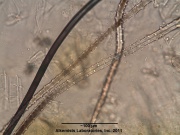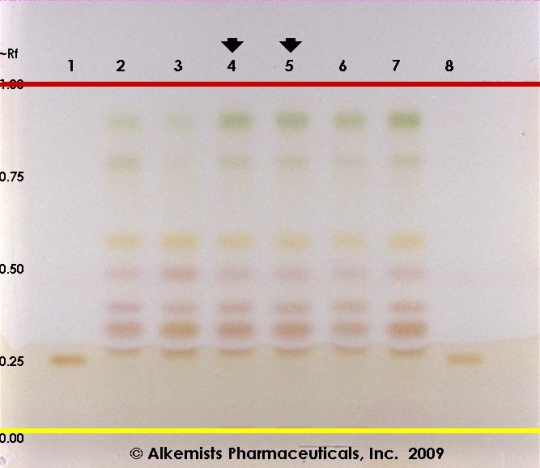Medicago sativa (leaf)
m |
|||
| Line 35: | Line 35: | ||
# 3 μL Canavanine ~0.1% in CH3OH | # 3 μL Canavanine ~0.1% in CH3OH | ||
| − | Reference materials used here have been authenticated by macroscopic, microscopic &/or TLC studies according to the reference source cited below held at Alkemists | + | Reference materials used here have been authenticated by macroscopic, microscopic &/or TLC studies according to the reference source cited below held at Alkemists Laboratories, Costa Mesa, CA. |
| reference=Phytochemical Methods, Harborne, J.B., 1998, p. 198 | | reference=Phytochemical Methods, Harborne, J.B., 1998, p. 198 | ||
| }} | | }} | ||
Revision as of 21:02, 22 October 2012
Contents |
Introduction
Macroscopic Entries
Microscopic Entries
|
HPTLC Entries
|
Alfalfa (leaf) (Medicago sativa L.) Lane Assignments Lanes, from left to right (Track, Volume, Sample):
Reference materials used here have been authenticated by macroscopic, microscopic &/or TLC studies according to the reference source cited below held at Alkemists Laboratories, Costa Mesa, CA. Stationary Phase Silica gel 60, F254, 10 x 10 cm HPTLC plates Mobile Phase n-butanol: pyridine: AcCOOH: H2O [5/1.25/1.25/2] Sample Preparation Method 0.3 g + 3 ml CH3OH sonicated + heated @ 50° C ~ 1 hr. Detection Method Ninhydrin Reagent -> visible light Reference see Phytochemical Methods, Harborne, J.B., 1998, p. 198
|
Other Points of Interest
Cite error: <ref> tags exist, but no <references/> tag was found


